As mentioned in the introduction, the Circular Flow Diagram is a model that is used to show a "big picture" of how the economy functions overall. It shows the interactions between consumers, or households, firms, the government, and the rest of the world.
Keep in mind that no model could show us every single interaction, so it is a simplified model.
Now, the two markets shown on the circular flow diagram are:
The output market is where we, as consumers, exchange goods and services.
EXAMPLE
For instance, one example of being involved in the output market would be going grocery shopping; you physically take goods home with you after going grocery shopping. Another example would be getting your hair cut. Even though you are not bringing a new good home with you, you are still purchasing a service.The input market is where we exchange the factors of production, which are land, labor, and capital. These factors of production are the "inputs" in the input market, as well as resources, and they are how outputs are produced.
EXAMPLE
You are likely involved in the input market with your labor. In order to afford to purchase anything, chances are you have to go to work to afford those things.The diagram is going to include two different kinds of flows:
Note, in our diagrams, the monetary flow will be represented in green and the physical flow in blue. We are going to start by discussing the interactions between households and firms. Then we will add in the government, and finally, the rest of the world.
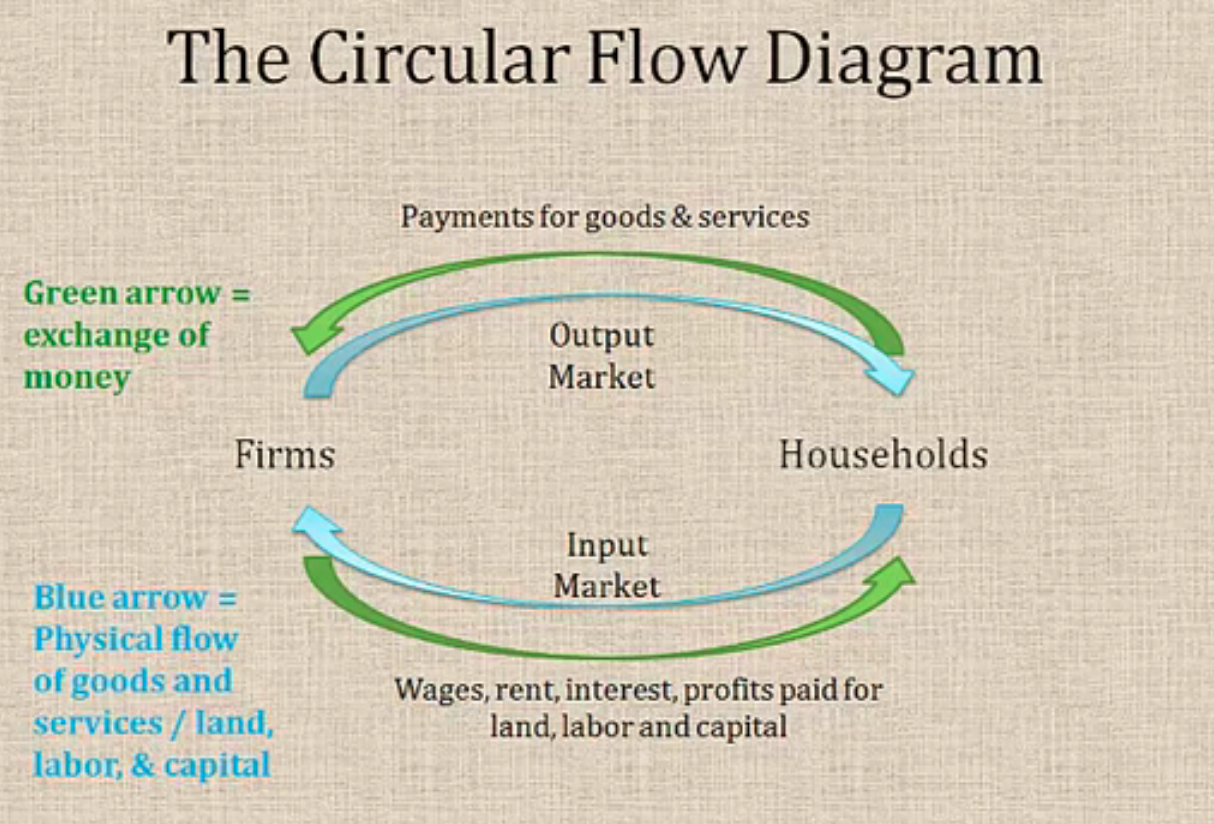
Now, the output market is at the top of the diagram. Notice that the blue arrow represents those goods or services coming home with you, such as the groceries coming home with you from the grocery store.
However, you did not steal them; you paid money to the grocery store in return for them. Therefore, you give money, and in exchange, the business provides you with the goods or services.
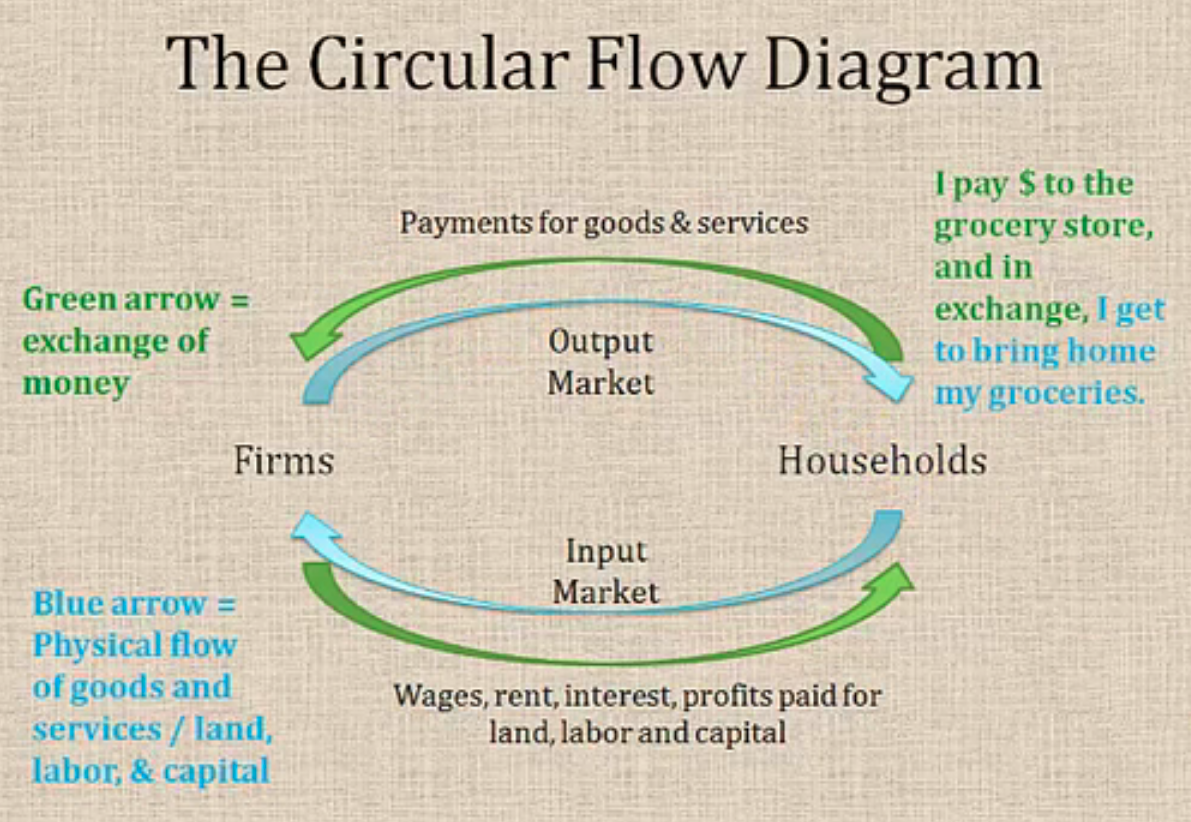
The input market is shown at the bottom of the diagram. Notice the green arrow, the monetary flow, representing the wages, rent, interest, and profits paid for land, labor, and capital.
So, for instance, you drive to work and provide your labor to your employer, and in return, your employer will pay you.
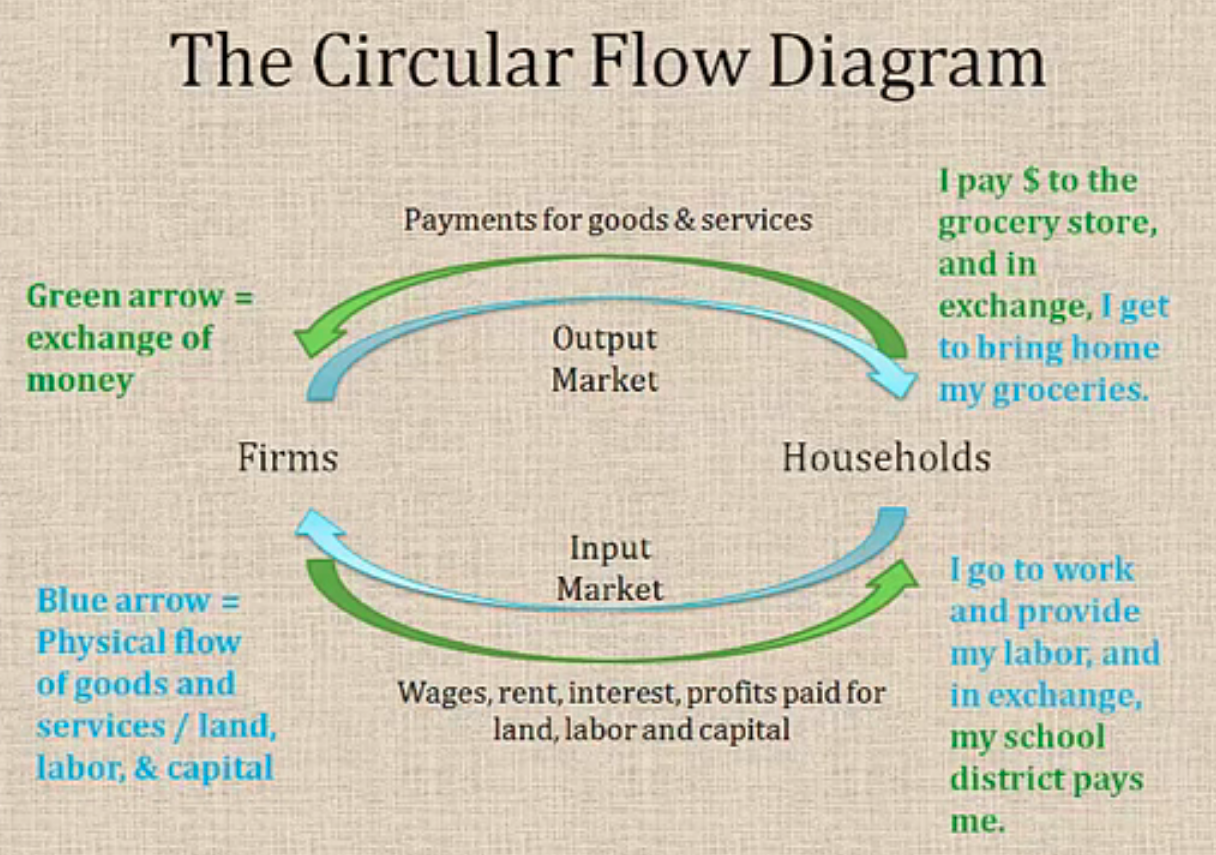
Speaking of different roles, here is another way to view the Circular Flow Diagram.
At the top, households, as demanders, are demanding goods and services, and the firms are supplying them to the households. Consumers pay money, and they bring those goods and services home with them.
At the bottom, though, households and firms have different roles. Firms are the ones to demand land, labor, and capital from households. Without this land, labor, and capital, the firms could not produce or supply anything to consumers in the output market, so now households are the ones supplying land, labor, and capital in the input market.
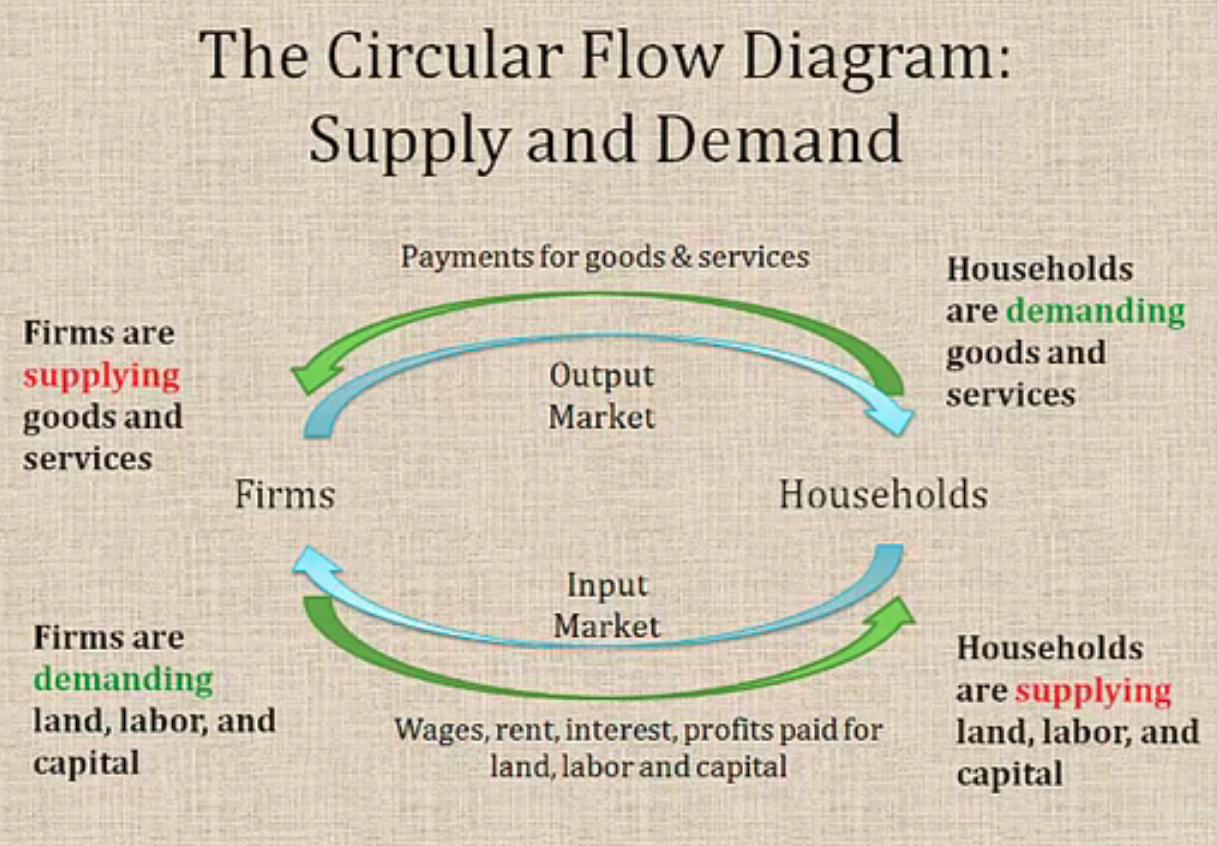
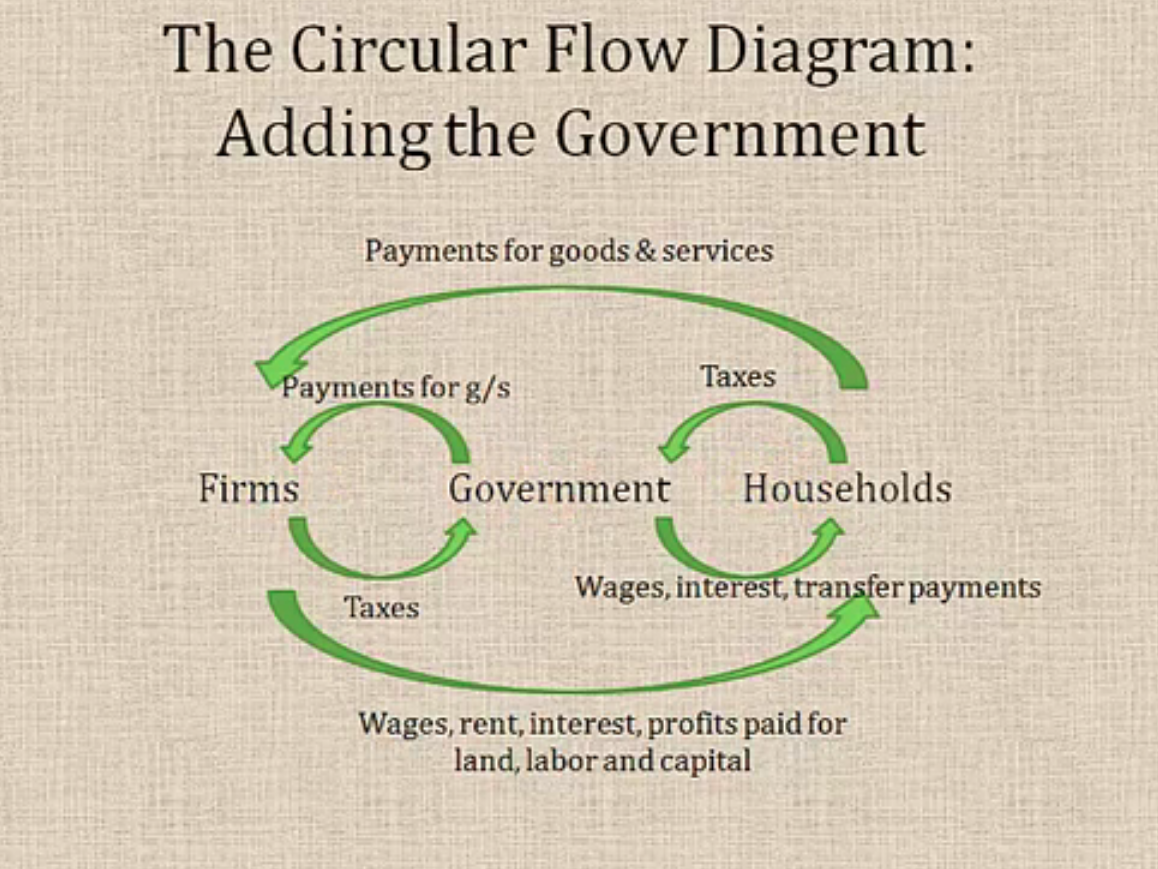
First of all, on the business side of things, the government collects taxes from firms, which is why the arrows show the firms paying taxes to the government.
However, the government also interacts in the output market with firms by paying for certain goods and services.
EXAMPLE
For example, if the government contracts out with a business to produce military goods for them, they would be paying money to that business for those goods or services.Now, where the firms are paying taxes, the government is also going to intervene sometimes with things like subsidies or business regulations. It is important to note that these types of interventions can alter the original supply and demand market between firms and the government.
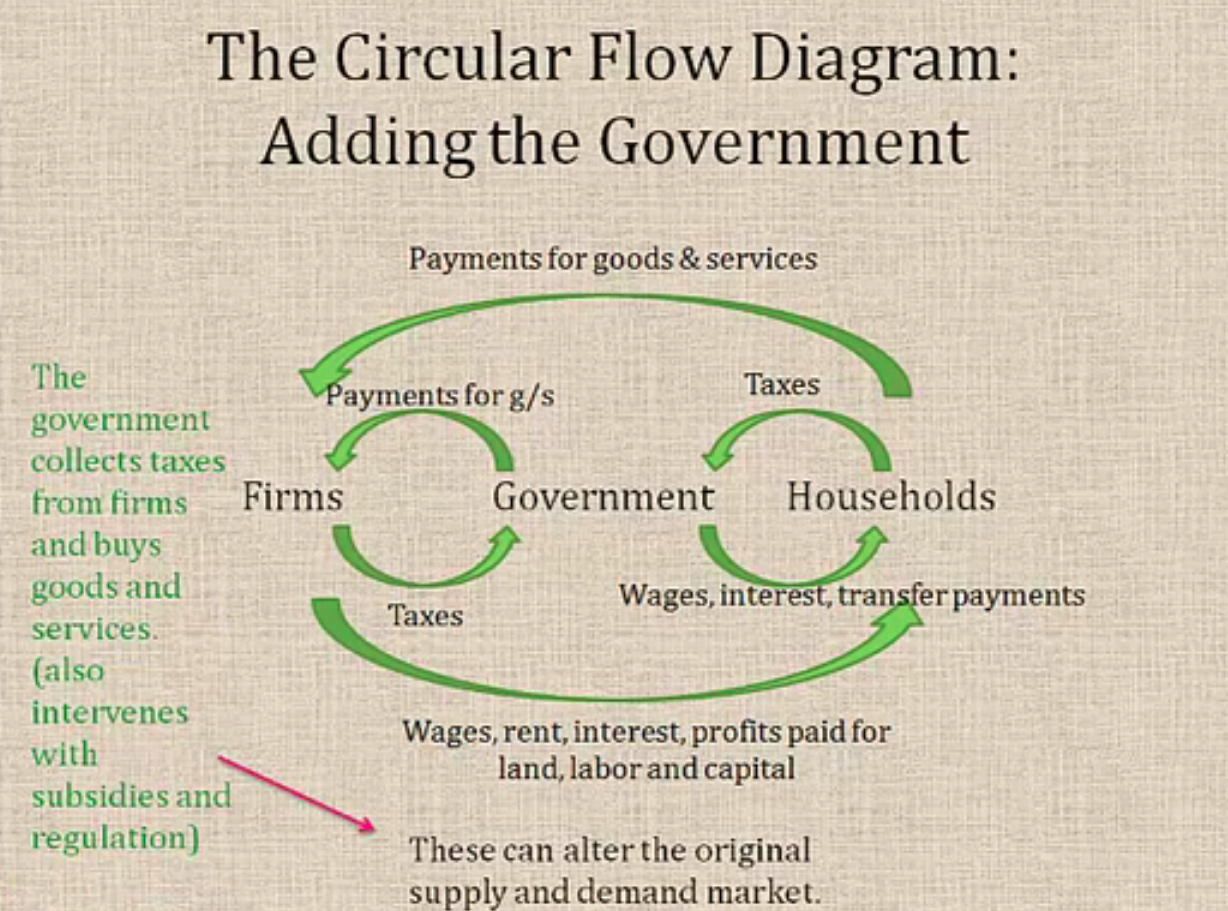
On the household side, the government collects taxes from us, the consumers. You can see the flow of the money going from households to the government.
However, the government also pays households in different ways. There are transfer payments that go from the government to households in the form of, for instance, social security or any type of welfare payments.
The government is also going to pay households if that household contains any government employees. Many people in our country work in some government capacity, in which case money would be flowing from the government to households in the form of wages.
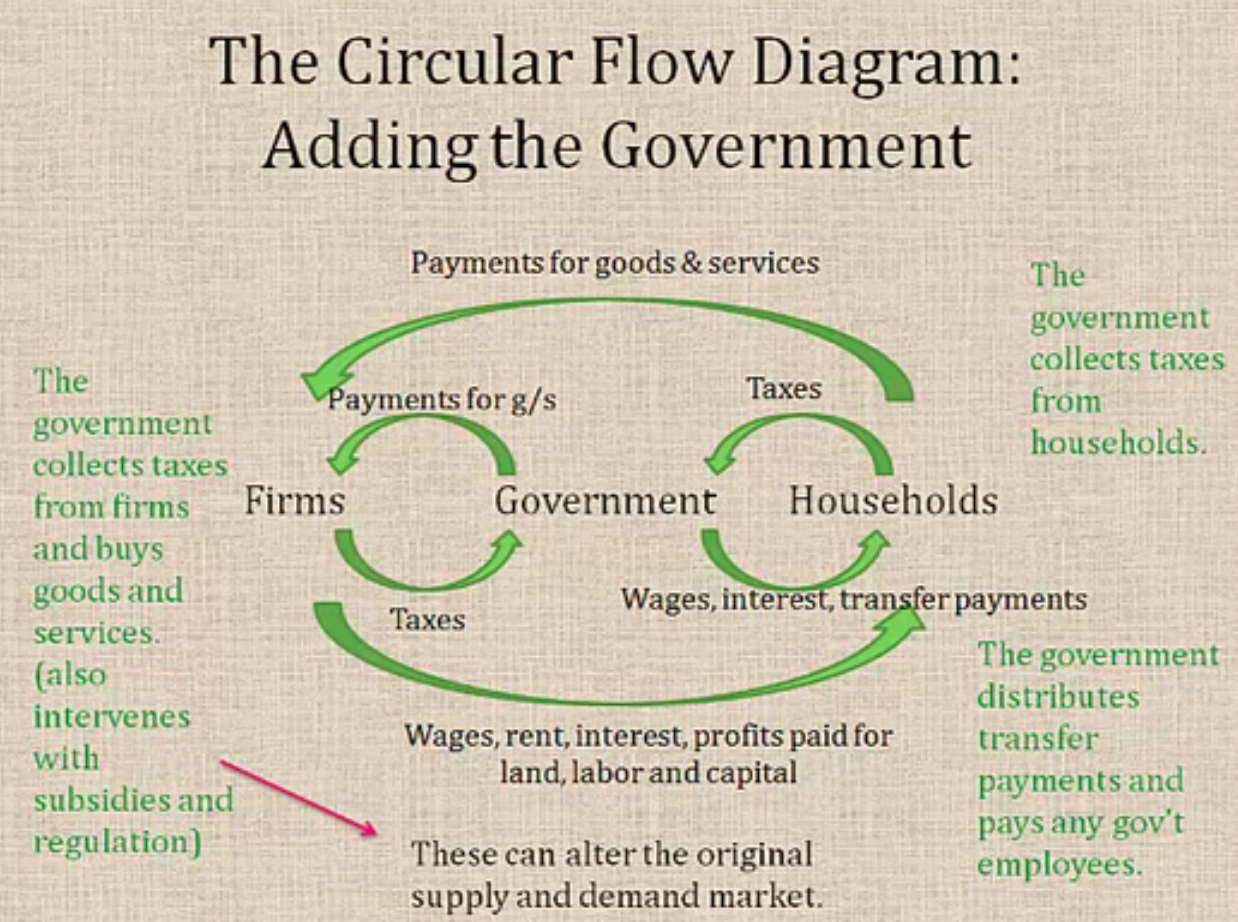
Now, there are two ways that we interact with the rest of the world:
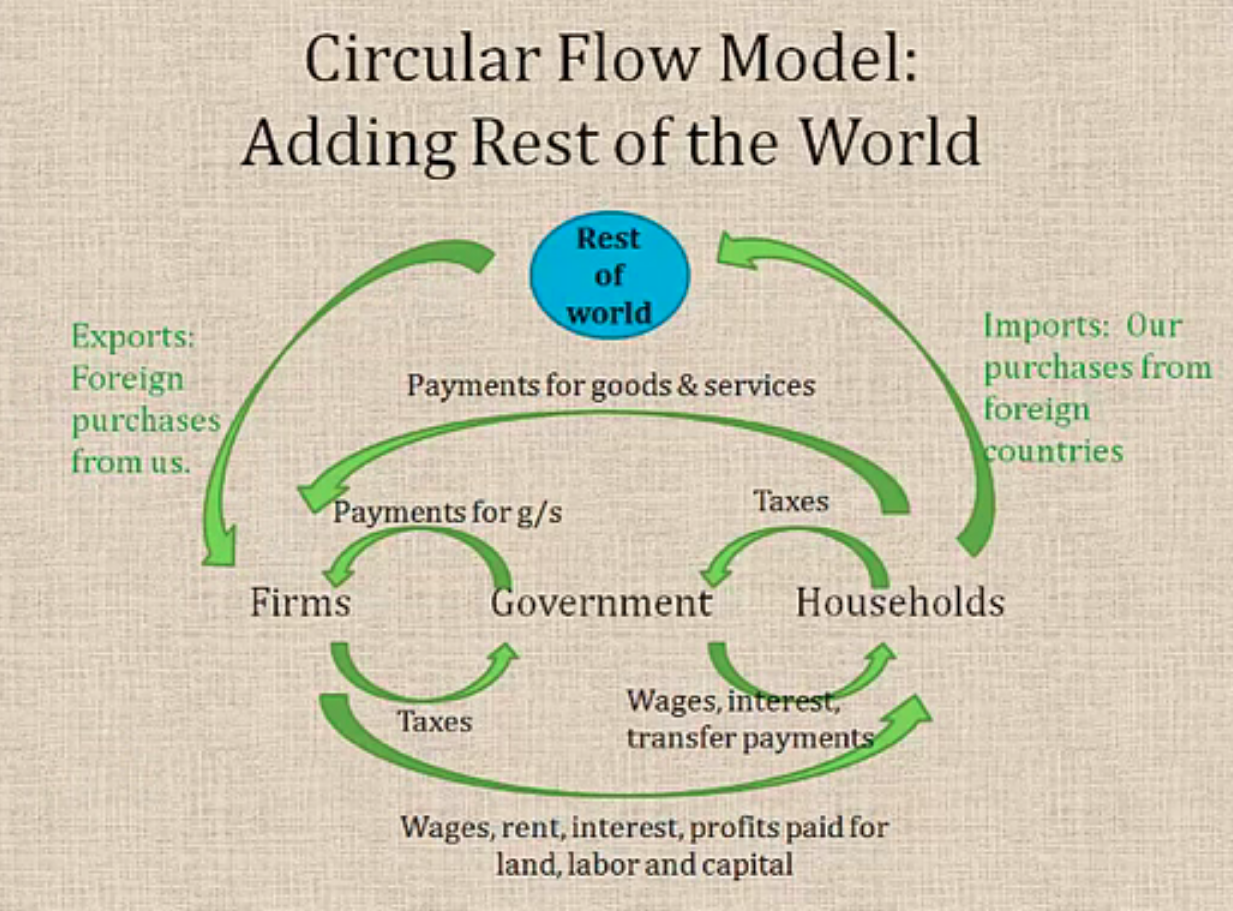
The first way, on the right of the diagram, is when we pay the rest of the world for imports.
EXAMPLE
Suppose we, the U.S., buy cars from Germany. We would have to pay Germany for those cars that were imported.The left-hand side of the diagram shows when the rest of the world is paying U.S. firms for exports.
EXAMPLE
For example, when foreigners purchase grain from U.S. farmers, this flow of exports is represented by that arrow.There are two different approaches to calculating GDP, the Gross Domestic Product. This will be the subject of a future tutorial, but for today's purposes, it is helpful to see these approaches on our Circular Flow Diagram.
Now, one of the things that we would have to do is add in the export purchases of foreigners from us. Conversely, we would have to subtract out all of the things we purchase from other countries because those things would not represent productivity from the United States' standpoint.
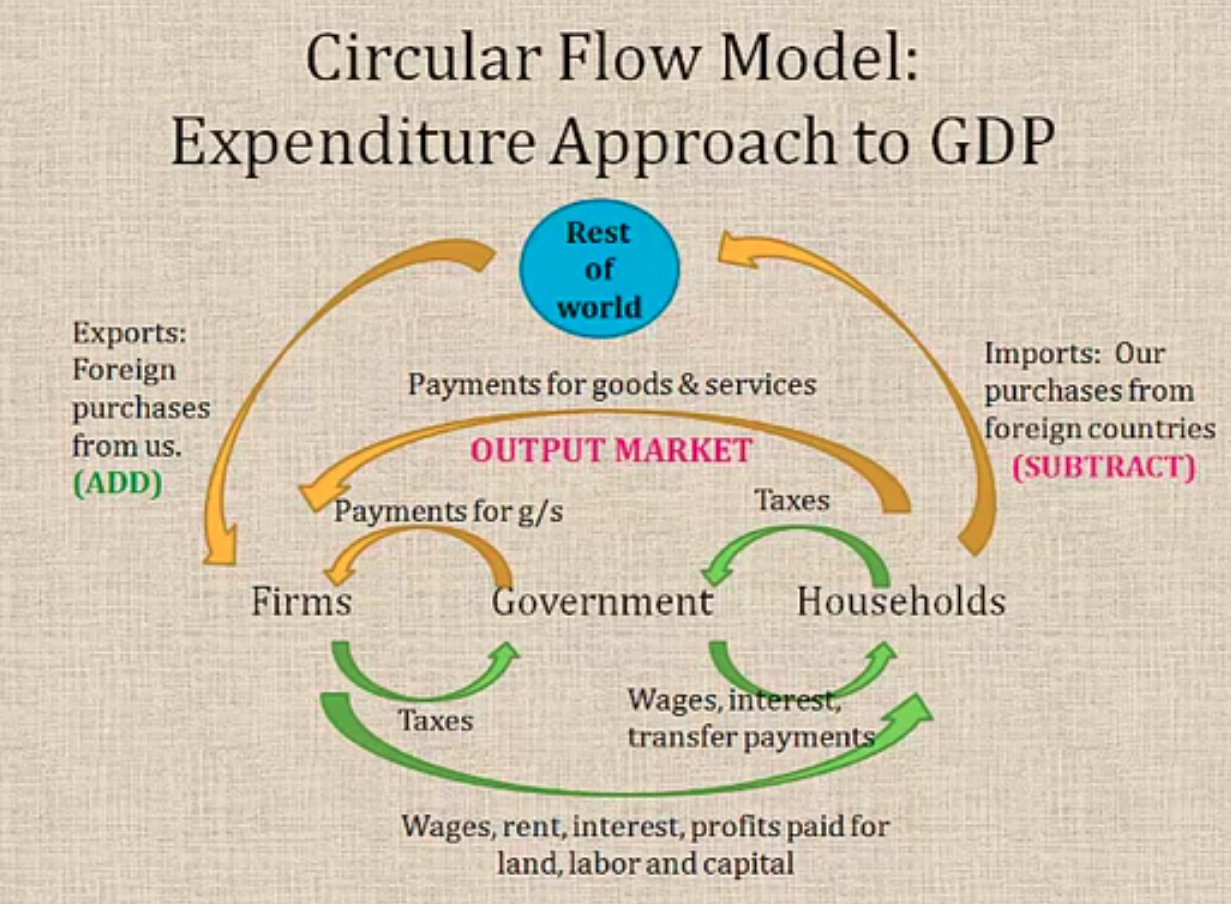
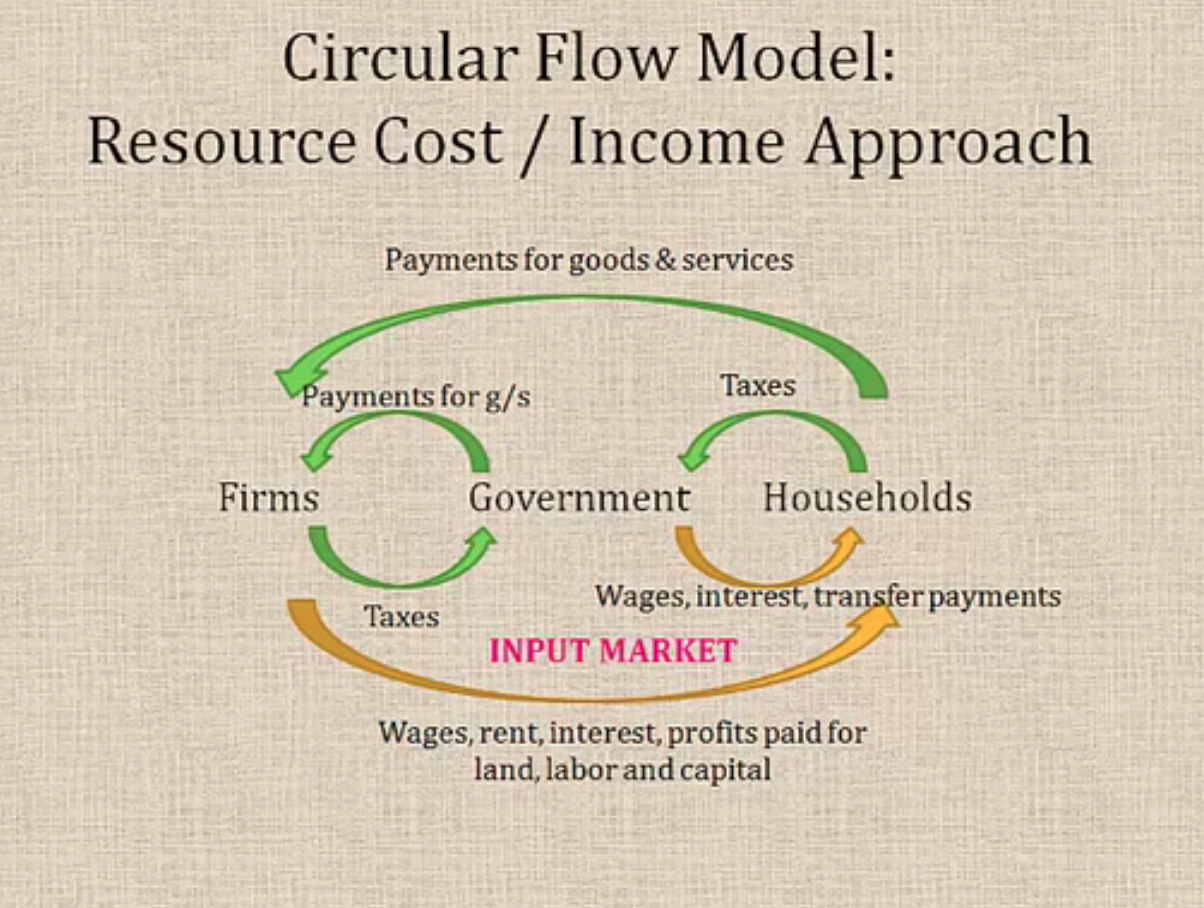
Believe it or not, these two different approaches, although vastly different, should arrive at the same number. This is because, if you think about it, every time you spend money somewhere up in the output market, it becomes a part of somebody else's income down in the input market.
Source: Adapted from Sophia instructor Kate Eskra.